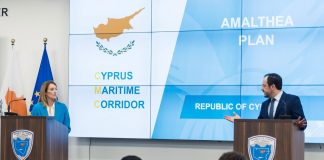NATO will decide in real time whether to use force against Russian aircraft or drones that breach allied airspace, based on live intelligence about the threat they pose, Secretary General Mark Rutte said in Brussels on 23 September. He stated that assessments would weigh intent, armaments and potential risks to Alliance forces, civilians and infrastructure.
Rutte underlined that Allied Command Operations, led by Supreme Allied Commander Europe (SACEUR) General Christopher G. Cavoli (referred to in some reports by his callsign), holds the standing authority, responsibility and capabilities to take necessary operational decisions. In the latest incident under discussion—an unauthorised entry into Estonian airspace—NATO aircraft intercepted and escorted the intruders without escalation because no immediate threat was identified.
The comments followed an extraordinary meeting of the North Atlantic Council on 23 September, convened at Estonia’s request under Article 4 of the Washington Treaty after three Russian MiG-31 fighters entered Estonian airspace over the Gulf of Finland on 19 September. NATO said the jets remained for around 12 minutes before being intercepted by allied aircraft. The Council condemned the violation and warned that the Alliance would use all necessary military and non-military means to defend its members.
The Estonian case came days after a separate episode in which more than 20 Russian drones crossed into Polish airspace during strikes on Ukraine; several were shot down by allied jets. NATO’s leadership had already issued a formal statement on 10 September condemning the Polish incursion and expressing solidarity with Warsaw. Together, the two incidents mark a rare back-to-back use of Article 4 in the Alliance’s 76-year history.
At the United Nations Security Council on 22 September, the United Kingdom’s Foreign Secretary, Yvette Cooper, warned that Russia’s actions risk “direct armed confrontation” with NATO if violations persist. She said Britain and its allies were ready to confront aircraft operating in Alliance airspace without permission, reiterating that NATO is defensive but will protect its skies and territory.
Poland’s leadership has signalled a similar stance. Prime Minister Donald Tusk and Foreign Minister Radosław Sikorski said Warsaw would act decisively against any future breaches, arguing that recent incursions were deliberate tests of the Alliance’s resolve.
From Kyiv, Ukraine’s Foreign Minister Andrii Sybiha urged a firmer allied response, including measures up to the “neutralisation” of hostile targets in the event of renewed violations. His remarks aligned with calls in Central Europe for clearer red lines after the incidents in Estonia and Poland.
Czech President Petr Pavel, a former NATO Military Committee chair, has argued that allied responses must be robust and, if necessary, military in nature to deter repeat provocations. He said that breaches of NATO airspace justify activation of defensive mechanisms, including the option to shoot down an aircraft.
While the rhetoric has sharpened, NATO’s public guidance remains procedural rather than declaratory. Rutte’s emphasis on case-by-case, intelligence-led decisions reflects established air policing practice: identify, intercept, escort and, only if required under rules of engagement and international law, employ force. The posture is intended to deter further incursions while avoiding inadvertent escalation.
The North Atlantic Council’s 23 September statement indicates that SACEUR briefed Allies on the Estonian incident and that air policing and air defence measures along the eastern flank are being maintained and, where necessary, reinforced. The Council framed the recent breaches as part of a broader pattern of Russian behaviour that it described as dangerous and escalatory.
Legally, Article 4 does not mandate a specific response; it triggers consultations when a member believes its security is threatened. It contrasts with Article 5, the collective defence clause, which requires Allies to consider an attack on one as an attack on all. Analysts note that Article 4 has historically served as a signalling tool and a coordination mechanism rather than an automatic prelude to force.
Operationally, the recent episodes have prompted additional visible activity: allied quick-reaction alerts, air policing rotations and political signalling at the UN. The United States and European allies have reiterated that they will “defend every inch” of NATO territory, a phrase that has become standard in Alliance messaging since 2022.
In practical terms, Rutte’s framing means NATO will not issue a blanket policy of automatic shoot-downs. Instead, any decision to engage will depend on the aircraft type, behaviour, payload, trajectory and the assessed risk to civilian populations and critical infrastructure at that moment. That approach leaves space for calibrated responses—interception and escort where possible, kinetic action where necessary.
For Estonia, Poland and other frontline states, the signal is twofold: the Alliance recognises the risk of normalising brief incursions, and it intends to manage escalation while preserving deterrence. Whether that balance holds will depend on Moscow’s next moves—and on how quickly NATO can translate Article 4 consultations into concrete defensive measures when violations occur.



